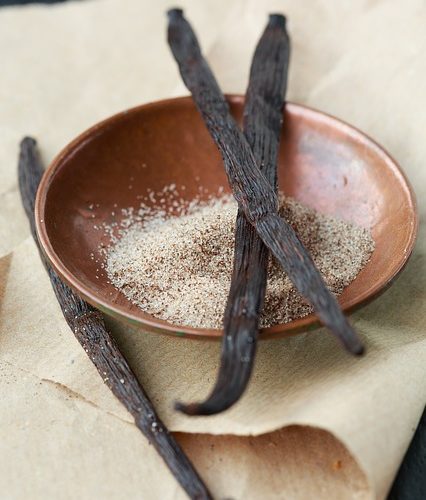On 7 April 2022, the ECJ issued its decision in the case C-668/20 (Y GmbH). This is a customs case.
Unofficial translation from the French version:
For these reasons, the Court (Ninth Chamber) rules:
1) The combined nomenclature must be interpreted as meaning that a product, consisting of approximately 85% ethanol, 10% water, 4.8% residue dry, with an average vanillin content of 0.5% and which is obtained by diluting, for standardization purposes, in water and ethanol an intermediate product, itself extracted from vanilla pods with medium of ethanol, falls under subheading 1302 1905 of this nomenclature.
2) A vanilla oleoresin falling within subheading 1302 1905 of the combined nomenclature must be considered as being a “flavouring”, within the meaning of this provision, on the condition that it constitutes an ingredient which brings a specific taste or smell to a specific product.
The request for a preliminary ruling concerns the interpretation of subheadings 1302 19 05, 3301 90 30 and 3302 10 90 of the combined nomenclature set out in Annex I to Council Regulation (EEC) No 2658/87 of 23 July 1987, relating to the tariff and statistical nomenclature and the Common Customs Tariff (OJ 1987, L 256, p. 1), as amended by Commission Implementing Regulation (EU) No 2015/1754 of 6 October 2015 (OJ 2015 L 285, p. 1) (hereinafter the “CN”), as well as Article 27(1)(e) of Council Directive 92/83/EEC of 19 October 1992, on the harmonization of the structures of excise duties on alcohol and alcoholic beverages (OJ 1992, L 316, p. 21).
Facts
Y GmbH imported into Germany brown, golden and liquid goods with a strong vanilla scent, composed of approximately 85% ethanol, 10% water, 4.8% dry residue and having a vanillin average of 0.5%. In order to obtain such a good, an intermediate product is first extracted from the vanilla bean using ethanol (hereinafter the “intermediate product”). This intermediate product, dark brown, very fragrant and pasty, is then diluted with alcohol and water to obtain the goods at issue in the main proceedings.
Y GmbH declared that goods under subheading 3302 10 90 of the CN for the purposes of their release for free circulation.
The competent Hauptzollamt (main customs office) took the view that that good should be classified under CN subheading 1302 19 05 and, therefore, that it was also subject to excise duty on brandy under German law. Consequently, he collected customs duties and excise duties.
The competent Finanzgericht (finance court, Germany) confirmed that the goods at issue in the main proceedings fell within subheading 1302 19 05 of the CN and, therefore, that the imposition of customs duties and excise duties was legal. Y GmbH lodged an appeal for “Revision” against the judgment of the Finanzgericht (Finance Court) before the referring court, the Bundesfinanzhof (Federal Finance Court, Germany), finding that these goods should be classified in sub – position 3302 10 90 of the CN.
The Bundesfinanzhof (Federal Finance Court) decided to stay the proceedings and to refer the following questions to the Court for a preliminary ruling:
‘(1) Must subheading 1302 19 05 of the [CN] be interpreted as meaning that it also includes a vanilla oleoresin extracted from it diluted with ethanol and water, composed of approximately 90 % (v/v) or 85% (m/m) ethanol, 10% (m/m) maximum water, 4.8% (m/m) dry residue and 0.5% (m/m) of vanillin, whereas, according to note 1, under ij), of chapter 13 of the CN, extracted oleoresins are excluded from heading 1302 of the CN?
2) Are products such as those described in the first question referred included in extracted oleoresins within the meaning of subheading 3301 90 30 of the CN?
3) Is subheading 3302 10 90 of the CN to be interpreted as meaning that products such as those described in the first question referred are to be classified as a mixture of odoriferous substances or a mixture (including alcoholic solutions) based on one or more of these substances, of the types used as raw materials for the food industry?
4) Are the products covered by subheading 1302 19 05 of the CN or the oleoresin of extraction of subheading 3301 90 30 of the CN also included in flavourings, within the meaning of Article 27 , paragraph 1(e) of Directive 92/83?’
Decision
Unofficial translation from the French version:
For these reasons, the Court (Ninth Chamber) rules:
1) The combined nomenclature appearing in Annex I to Council Regulation (EEC) No 2658/87 of 23 July 1987 on the tariff and statistical nomenclature and on the Common Customs Tariff, as amended by the implementing regulation (EU) No 2015/1754 of the Commission, of 6 October 2015, must be interpreted as meaning that a product, consisting of approximately 85% ethanol, 10% water, 4.8% residue dry, with an average vanillin content of 0.5% and which is obtained by diluting, for standardization purposes, in water and ethanol an intermediate product, itself extracted from vanilla pods with medium of ethanol, falls under subheading 1302 1905 of this nomenclature.
2) Article 27(1)(e) of Council Directive 92/83/EEC of 19 October 1992 on the harmonization of the structures of excise duties on alcohol and alcoholic beverages, must be interpreted as meaning that a vanilla oleoresin falling within subheading 1302 1905 of the combined nomenclature listed in Annex I to Regulation No 2658/87, as amended by Implementing Regulation No 2015/1754 , must be considered as being a “flavouring”, within the meaning of this provision, on the condition that it constitutes an ingredient which brings a specific taste or smell to a specific product.
Source















